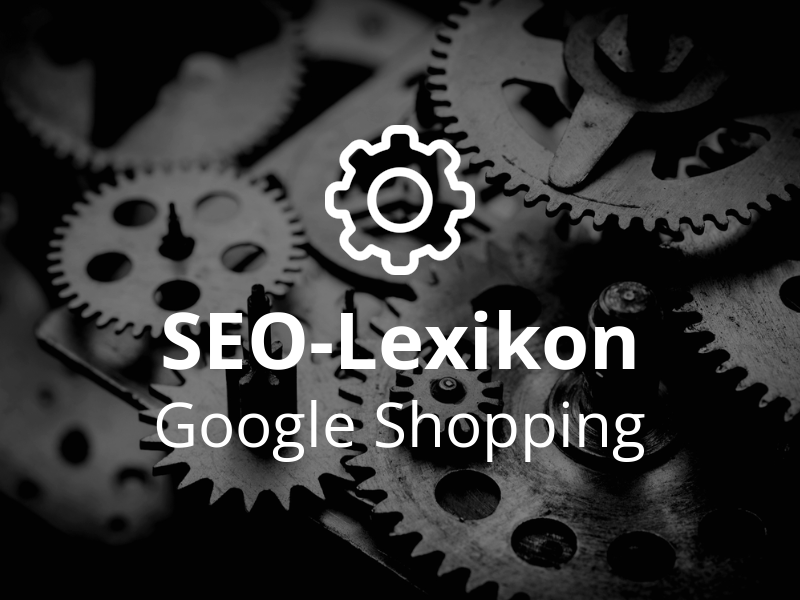What is Google Shopping?
Google Shopping is a Google service that enables users to find products from various online sellers in Google search results. Originally known as "Google Froogle", the service was renamed in 2013. Google Shopping and since then has operated according to an auction-based CPC model. Sellers provide product information via the Google Merchant Center which Google then displays.
Both paid and unpaid product results are displayed. Searchers can customize their search results by adjusting filters. Search results by price, category or brand. Google does not direct users directly to purchases within the platform, but links them to the retailers' websites, where the purchase process is completed. The integration of personalized entries based on user activity also enables an optimized presentation of products in the context of search queries.
Functionality and user experience
Google Shopping works by connecting users with a variety of online products by displaying relevant ads and articles based on the search terms. This is done through advanced algorithms that ensure the results shown are most likely to meet the user's needs. Users can use the Search results You can use various filters such as price, category and brand to quickly find the product you are looking for.
The platform does not offer the option of direct purchases. Instead, when selecting a product, the user is redirected to the retailer's website, where the actual purchase process takes place. If problems arise during the purchase process, responsibility lies with the seller's customer support team and not with Google itself. A special functionality is the use of personalized entries based on the user's previous activities, which leads to a personalized shopping experience.
Ad formats and structure
Google Shopping offers a variety of ad formats that meet the different needs of sellers. A common format is the Product Listing Ads (PLAs)which stand out due to their visual presentation with product images and details. These ads appear directly in the search results and offer potential buyers an immediate overview of what is on offer. The Smart Shopping Ads combine the features of PLAs with remarketing components in the Google Display networkto increase the chances of reaching a wider audience.
There is also the Showcase Shopping Adswhich are particularly suitable for promoting product categories. These allow a collection of products to be presented in a larger format, providing an inspiring shopping experience. These ad formats are supported by the Google Merchant Center where sellers can make and update their product settings. They offer merchants the opportunity to target specific audiences by carefully optimizing the product feed and continuously monitoring performance through the Merchant Center.
History and development of Google Shopping
Google Shopping has undergone an interesting development that has made it the service we know today. Originally launched in 2002 under the name "Google Froogle", it was an initiative designed to make it easier for users to find products online and compare prices. The change to a paid model and the renaming to "Google Shopping" in 2013 marked a turning point where auction-based billing for click prices was integrated. This offered merchants the opportunity to make their products more visible based on their bid.
The platform has evolved to also offer free listings in the US since April 2020, a measure that was rolled out globally by the end of the same year. This development has enabled more retailers to offer their products via Google Shopping without investing in advertising. The opening of the auction platform to external CSS (Comparison Shopping Services) also increased diversity and offers merchants the opportunity to use favorable CPC strategies via third-party providers. This ongoing adaptation to the market and user needs demonstrates the dynamic nature of Google Shopping.
Criticism and regulatory challenges
Google Shopping has been the focus of criticism and regulatory challenges on several occasions during its development. One striking example is the 2.4 billion euro fine imposed on Google by the European Union. This action was based on the accusation that Google was abusing its dominant market position in the area of product search by giving preferential treatment to its own services. This led to the demand to create a level playing field for all retailers.
As a result of regulatory intervention, the auction platform was opened up to external Comparison Shopping Services (CSS). This innovation has enabled other providers to enter the market and offer traders alternative pricing options. The regulatory steps are evidence of efforts to create a fair and transparent marketplace, although the debate over Google's practices in the online advertising market continues. These challenges highlight the balancing act that Google Shopping between innovation and regulatory requirements in order to remain both market leader and compliant with regulations.
« Back to Glossary Index

